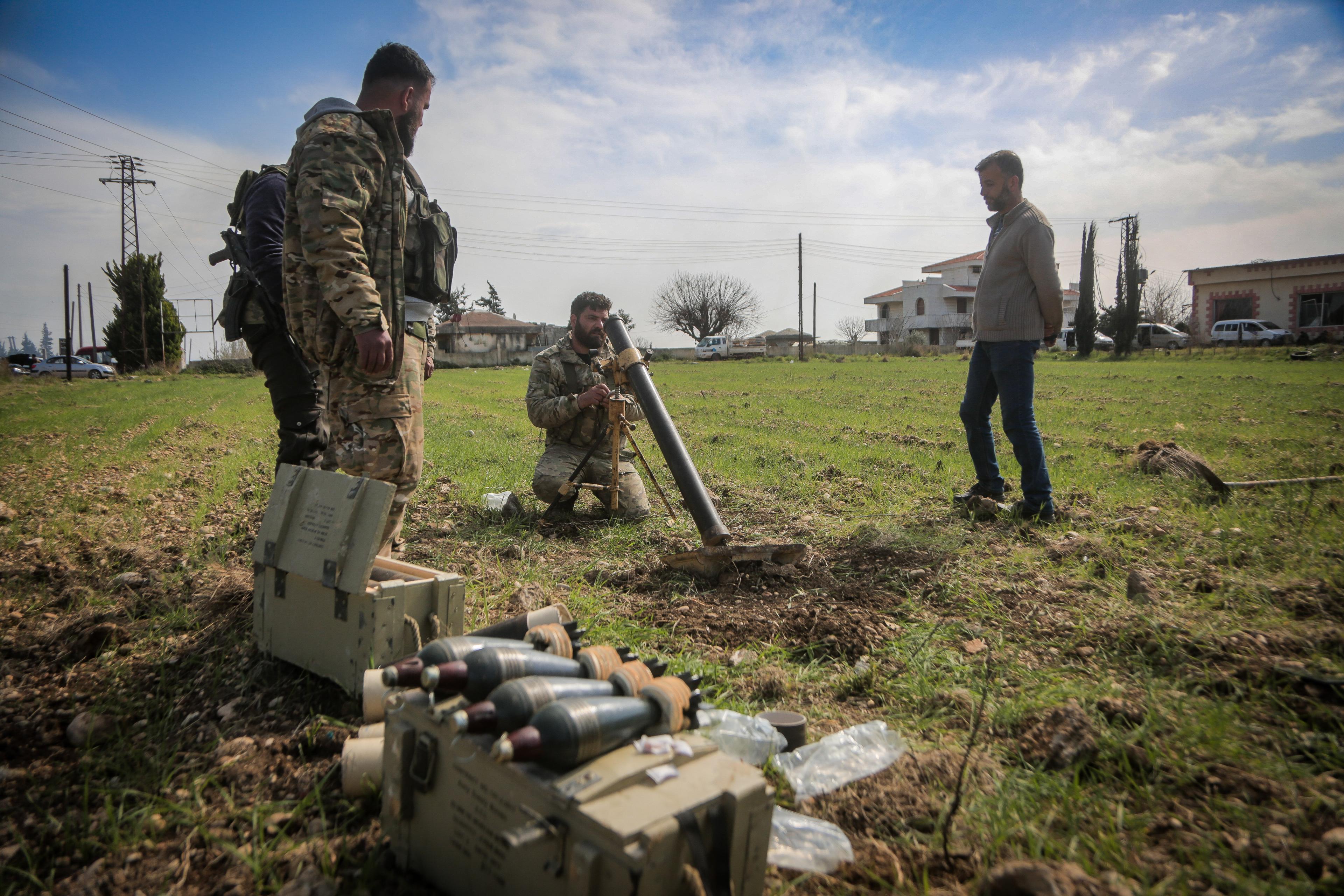Coastal Clash
CHAOS in Syria: Alawite insurgency tests al-Sharaa’s rule amid rising sectarian strife
Violence surges in Latakia and Tartous, Raising doubts over the interim President’s grip on power.

Syria’s coastal region, a historic stronghold of the Alawite minority, descended into chaos over the past two days, March 7-8, 2025, as clashes between security forces under interim President Ahmed al-Sharaa and Alawite fighters loyal to ousted leader Bashar al-Assad claimed hundreds of lives.
The violence, centered in Latakia and Tartous provinces, marks the most severe challenge yet to al-Sharaa’s authority since his Hayat Tahrir al-Sham (HTS) coalition toppled Assad in December 2024, exposing deep sectarian fault lines and casting doubt on his pledges of inclusive governance.
March 7: A Spark Ignites
The unrest erupted on Friday, March 7, when Alawite fighters—described by Syrian authorities as remnants of Assad’s regime—launched coordinated attacks on government security forces. The Syrian Observatory for Human Rights (SOHR) reported an ambush in Jableh, a coastal town, where at least 13 security personnel were killed, a figure echoed by government-aligned Syria TV. Alawite activists countered that the violence stemmed from provocation by security convoys, alleging abuses like abductions and mass firings of Alawites from state jobs since Assad’s fall.
Al-Sharaa’s response was swift. Large contingents of HTS-affiliated forces moved into the region overnight, clashing with insurgents in what authorities called a bid to crush a nascent rebellion. Casualty estimates from March 7 vary—ranging from dozens (BBC) to over 180 (SOHR)—with reports of executions in Alawite villages like Al Mukhtareyah adding a grim layer. Social media posts and local accounts described scenes of looting and burning homes, though specifics remain unverified amid the fog of conflict.
The Alawites, comprising roughly 10% of Syria’s population and a backbone of Assad’s military and bureaucracy, have faced an uncertain fate under al-Sharaa’s Sunni Islamist leadership. Despite his public shift from jihadist roots as Abu Mohammed al-Julani to a statesman promising coexistence, the outbreak suggests a trust deficit too wide to bridge.
March 8: Escalation and Outcry
By Saturday, the violence had spiraled. The SOHR reported a staggering toll: over 340 deaths since Thursday, including 162 to 340 Alawite civilians allegedly killed by security forces or allied gunmen in Jableh, Baniyas, and surrounding areas. Reuters and CNN noted similar figures—250 to 400—though independent confirmation remains elusive. Specific claims of “five separate massacres” (SOHR) and execution-style killings of women and children fueled accusations of sectarian revenge, with videos circulating online showing bodies in Alawite villages.
Al-Sharaa addressed the nation late Friday in a televised speech carried into Saturday coverage. Backing the crackdown, he urged his forces to avoid “exaggeration” in their response, warning that abandoning morals would blur the line between his government and its foes. Yet his description of Alawite support for Assad as an “unforgivable mistake” stoked fears of targeted retribution, undercutting earlier assurances of unity. Curfews in Latakia, Tartous, and Homs—imposed Friday and extended Saturday—underscored the crisis’s breadth.
The Alawite Islamic Council blamed the government, alleging security convoys were sent to “terrorize and kill” under the pretext of rooting out regime loyalists, and called for UN protection. Some residents reportedly fled to Russia’s Hmeimim base in Latakia, though Moscow’s response has been limited to reconnaissance flights, not intervention.
A Leader Under Scrutiny
Ahmed al-Sharaa, once a feared al-Nusra Front commander, has ruled as Syria’s transitional president since January 2025, navigating a delicate balance between consolidating power and projecting moderation. His HTS-led offensive ended Assad’s 54-year dynasty in just 12 days last December, earning him regional backing from Turkey and Qatar. Yet the coastal unrest—three months into his tenure—reveals the limits of his control. Analysts note that while he has met with Kurdish, Christian, and Druze leaders, no such outreach to senior Alawite figures has been reported, a gap now glaringly apparent.
International reactions reflect unease. The UN envoy urged restraint amid a “fluid situation,” while Israel’s Defense Minister Israel Katz labeled al-Sharaa a “jihadist terrorist” committing “atrocities,” citing graphic evidence—though Israel has not intervened beyond its southwestern security zone. Iran condemned the violence broadly, avoiding direct criticism of HTS. Turkey, a key HTS supporter, expressed concern but offered no concrete steps.
The Bigger Picture
The Alawites’ plight encapsulates Syria’s post-Assad fragility. Once privileged under Assad, many have surrendered arms, but a resistant minority—emboldened by fears of marginalization—now fuels unrest. The SOHR’s tally of 139 civilian deaths in sectarian violence since December suggests a simmering crisis that March 7-8 has ignited. Al-Sharaa’s insistence on monopolizing weapons faces resistance not just here but in Druze and Kurdish regions, hinting at broader instability.
The government frames the violence as a necessary purge of Assad loyalists; critics see a slide into sectarian cleansing. The truth, as often in Syria, is murky—casualty numbers oscillate, and propaganda abounds. What’s clear is the scale of bloodshed, challenging al-Sharaa’s image as a unifier and raising questions about his ability to govern a fractured nation.
The situation remains volatile, with no resolution in sight. The coastal clash may prove a defining test for al-Sharaa—and for Syria’s precarious transition.